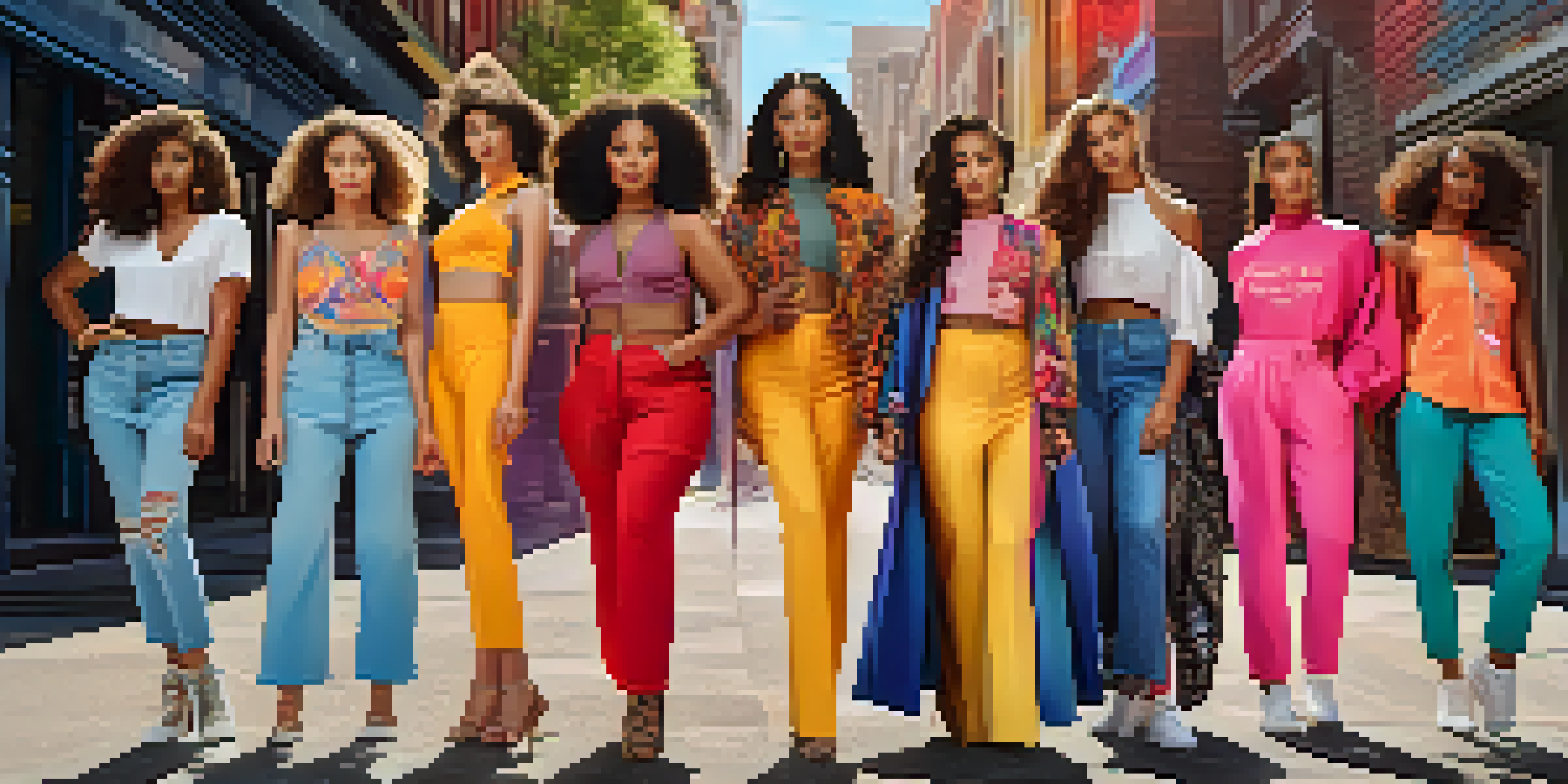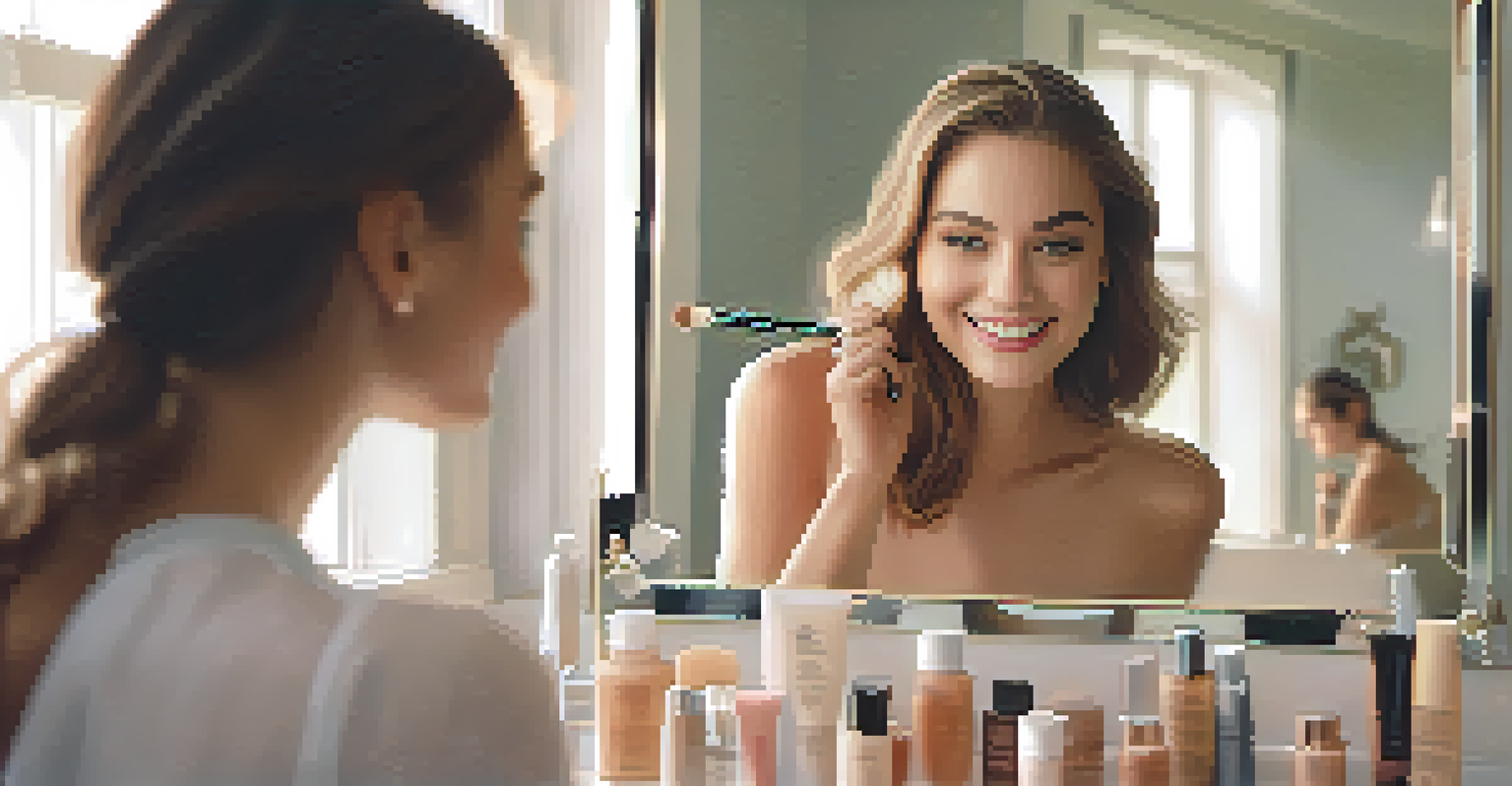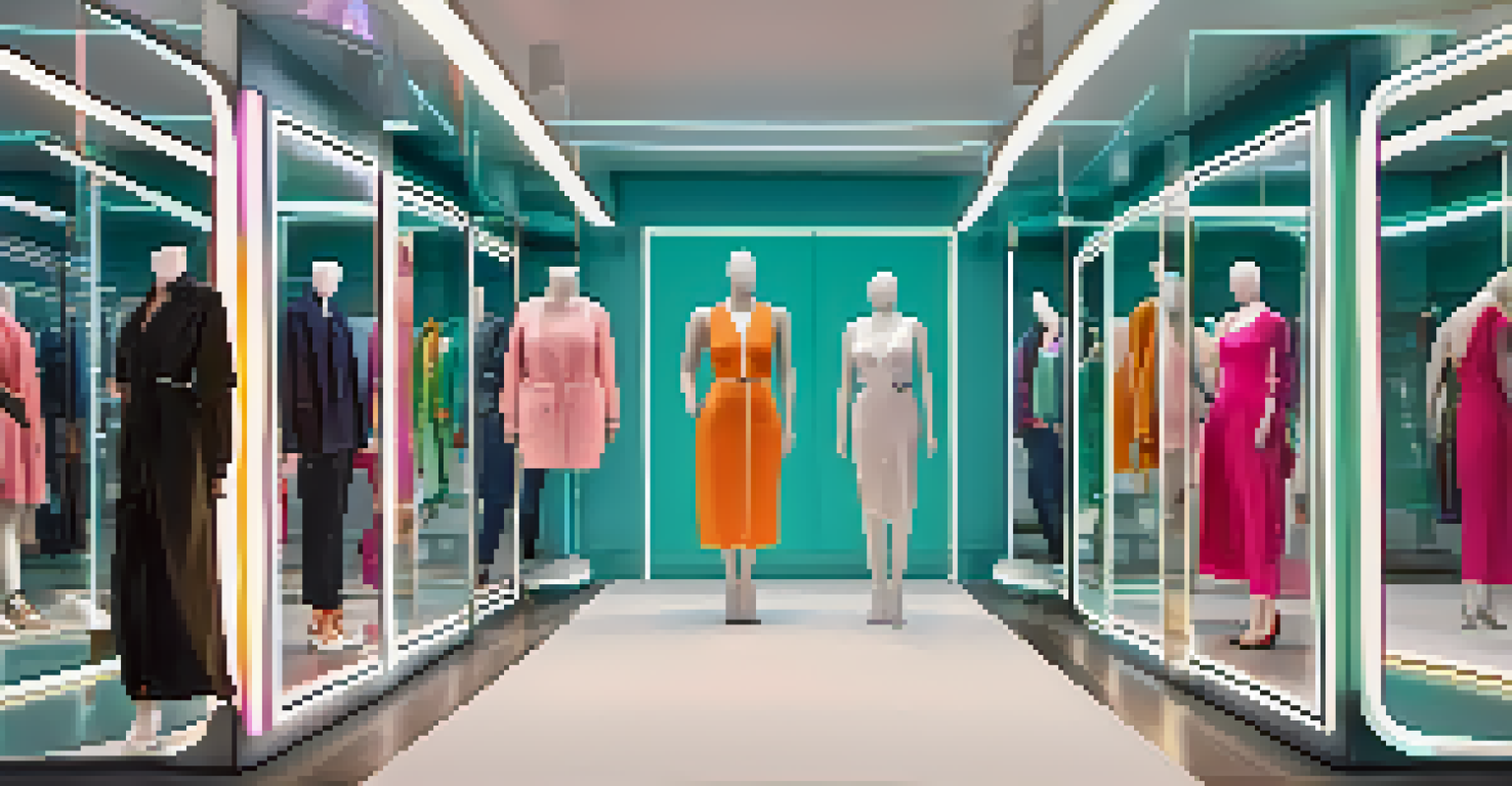Exploring the Impact of Gender Representation in Fashion Ads

Understanding Gender Representation in Fashion Ads
Gender representation in fashion ads refers to how different genders are portrayed in advertising campaigns. This includes not only the models used but also the roles and characteristics assigned to them. With fashion being a visual medium, these representations can significantly influence public perception and societal norms.
The media's portrayal of gender affects how we see ourselves and each other.
For example, when women are often depicted in passive roles, it can reinforce outdated stereotypes about femininity. Conversely, portraying women as strong and independent can help shift societal views and empower audiences. The same applies to male representations, where ads can either promote traditional masculinity or challenge it by showcasing vulnerability and emotional depth.
Understanding these dynamics is crucial because ads are a powerful tool that shapes cultural narratives. As consumers become increasingly aware of these messages, brands may feel pressure to adapt their strategies to reflect a more balanced representation of gender.
The Historical Context of Gender in Fashion Advertising
Historically, fashion advertising has leaned heavily on gender stereotypes, often portraying women in domestic roles and men as assertive leaders. This trend can be traced back to the mid-20th century, where ads often emphasized a woman's role in the home. For instance, many ads featured women as caretakers or homemakers, reinforcing a narrow view of femininity.

Over the decades, there have been shifts in these portrayals, especially during movements advocating for women's rights and gender equality. The 1960s and 70s saw a rise in more liberated representations, with women depicted in professional settings. However, the journey has been uneven, with periods of regression where traditional stereotypes resurfaced.
Gender Ads Shape Cultural Norms
Fashion advertising plays a significant role in shaping societal views and expectations regarding gender representation.
These historical patterns are essential to understand as they inform current fashion advertising strategies. Brands that recognize the past can better navigate the complexities of modern representation, catering to a more aware and diverse audience.
The Role of Social Media in Shaping Gender Representation
Social media has revolutionized fashion advertising, providing a platform for diverse voices and representations. Brands can now engage directly with consumers, allowing for immediate feedback on their campaigns. This dynamic has led to a push for more inclusive and varied portrayals of gender in fashion ads.
Diversity is being invited to the party; inclusion is being asked to dance.
For example, many brands now showcase models of different sizes, ethnicities, and genders, breaking away from traditional beauty standards. This shift not only appeals to a broader audience but also fosters a sense of community and belonging among consumers. Brands like Aerie and Savage X Fenty have been pioneers in this space, building loyal followings through their commitment to inclusivity.
Moreover, social media allows consumers to hold brands accountable, demanding authenticity in representation. This increased scrutiny encourages companies to be more thoughtful about who they feature in their ads and how they portray gender, ultimately leading to more positive societal changes.
The Psychological Impact of Gender Representation
The way gender is represented in fashion ads can have profound psychological effects on individuals. Studies show that repeated exposure to certain stereotypes can shape self-esteem and body image. For instance, when women are consistently portrayed in unrealistic ways, it can lead to feelings of inadequacy among viewers who feel they don’t measure up.
On the other hand, positive representation can foster empowerment and self-acceptance. Campaigns that celebrate diversity and authenticity can inspire individuals to embrace their uniqueness. This is particularly important in a world where social media often amplifies pressures to conform to idealized standards of beauty.
Social Media Drives Inclusive Change
The rise of social media has empowered consumers to demand more diverse and authentic representations in fashion ads.
Understanding the psychological impact of gender representation helps brands recognize their responsibility in shaping public perception. When companies choose to promote healthy and diverse images, they contribute to building a more positive self-image among their audiences.
Consumer Reactions to Gender Representation in Fashion Ads
Consumer reactions to gender representation in fashion ads are increasingly vocal and impactful. Many consumers now actively seek brands that align with their values, particularly regarding inclusivity and authenticity. This shift has led companies to re-evaluate their advertising strategies to resonate with a more conscious audience.
For instance, campaigns that feature diverse models and challenge gender norms can generate significant positive buzz and engagement. Consumers often share their approval on social media, amplifying the message and encouraging other brands to follow suit. Conversely, brands that fall short of these expectations can face backlash, leading to boycotts or negative publicity.
This evolving landscape highlights the power of consumer influence in the fashion industry. As people demand more responsible representation, brands must adapt to these expectations or risk losing relevance in a competitive market.
The Future of Gender Representation in Fashion Advertising
The future of gender representation in fashion advertising looks promising, with a growing emphasis on inclusivity and diversity. As consumers continue to advocate for change, brands are increasingly recognizing the importance of reflecting a wide array of identities in their campaigns. This shift is not only beneficial for consumers but also for the brands themselves, as it can lead to increased loyalty and engagement.
Moreover, technological advancements such as virtual reality and augmented reality are opening new avenues for representation. These technologies can create immersive experiences that allow brands to showcase a broader spectrum of gender identities and expressions. Imagine a virtual fitting room where consumers can see themselves in a variety of styles and body types – the possibilities are endless.
Positive Representation Influences Self-Image
The portrayal of gender in fashion ads can greatly impact individuals' self-esteem and body image, highlighting the need for responsible marketing.
As we move forward, it’s crucial for brands to remain authentic in their representations. Genuine commitment to diversity and gender inclusivity will ultimately define success in the fashion industry, creating a more equitable landscape for everyone.
Case Studies: Brands Leading the Way in Representation
Several brands have emerged as leaders in promoting gender representation in their advertising campaigns. For instance, Aerie, a lingerie brand, has gained acclaim for its 'Aerie Real' campaign, which features unretouched photos of diverse models. This initiative not only challenged traditional beauty standards but also resonated with consumers seeking authenticity.
Similarly, Fenty Beauty, founded by Rihanna, has made waves with its inclusive marketing strategy. The brand launched with a wide range of foundation shades, celebrating all skin tones and genders. This approach not only filled a gap in the market but also set a new standard for beauty brands to follow.

These case studies demonstrate that embracing diversity and challenging gender norms can lead to significant business success. As more brands recognize the value of authentic representation, we can expect to see a continued shift toward inclusivity in fashion advertising.